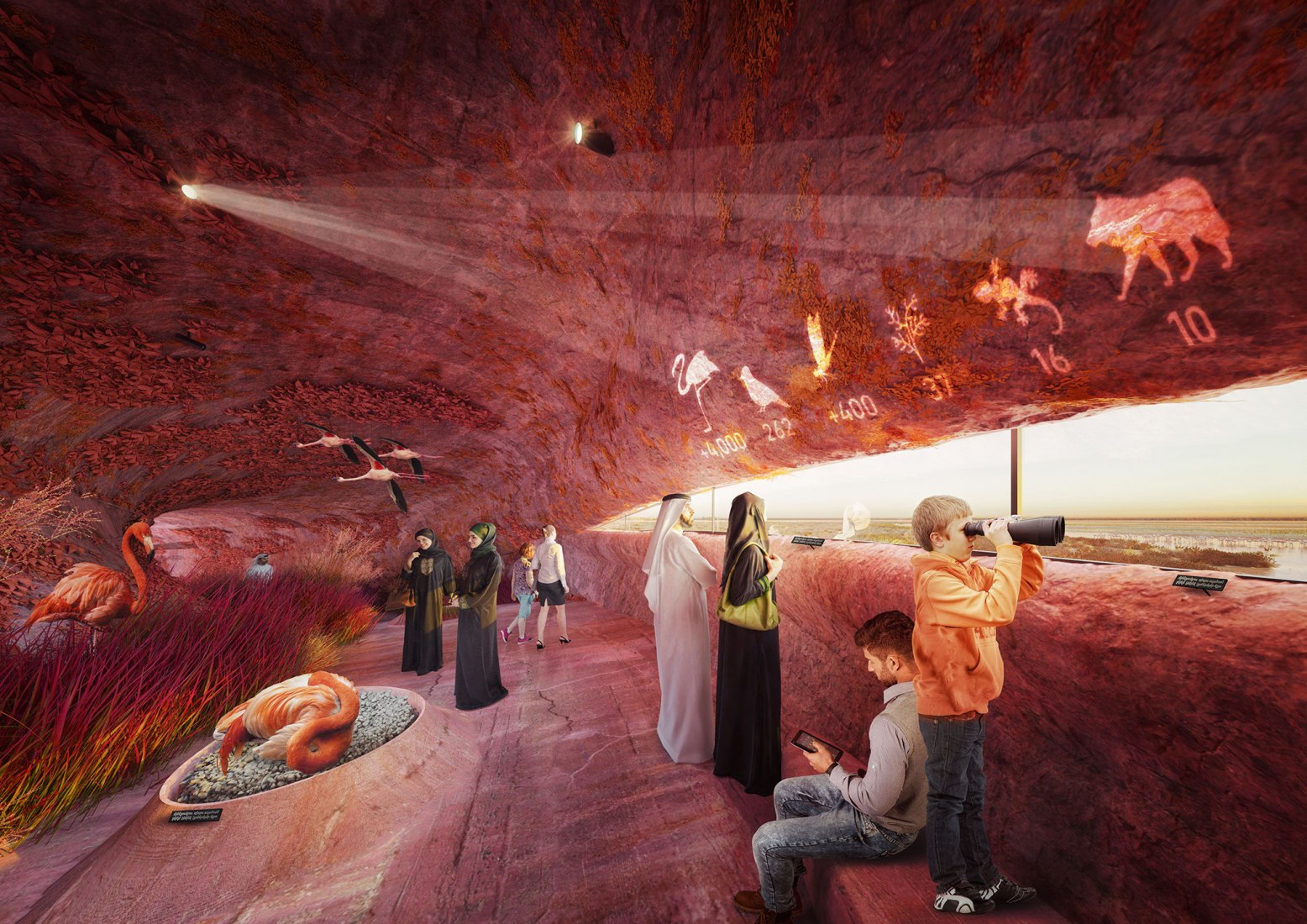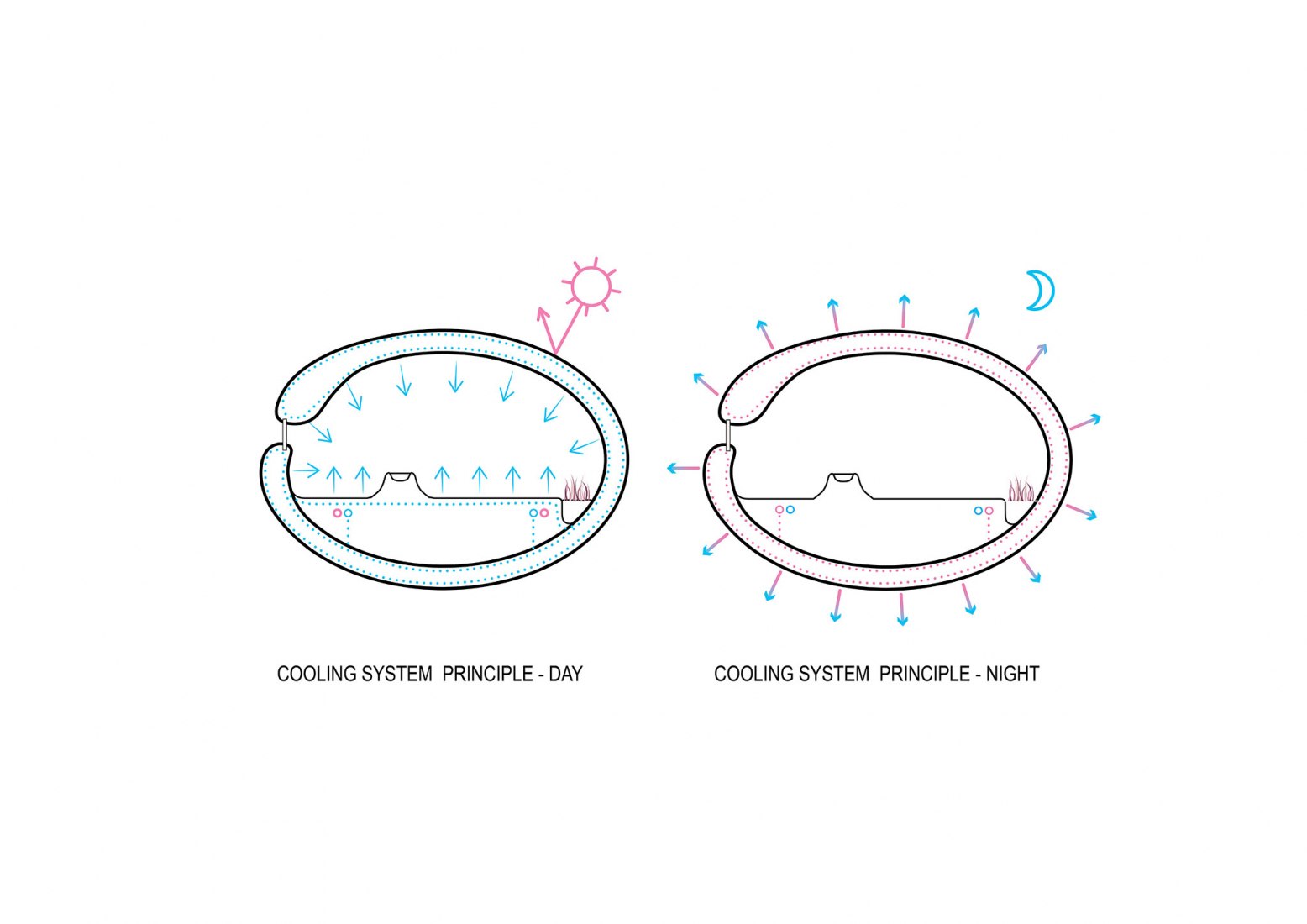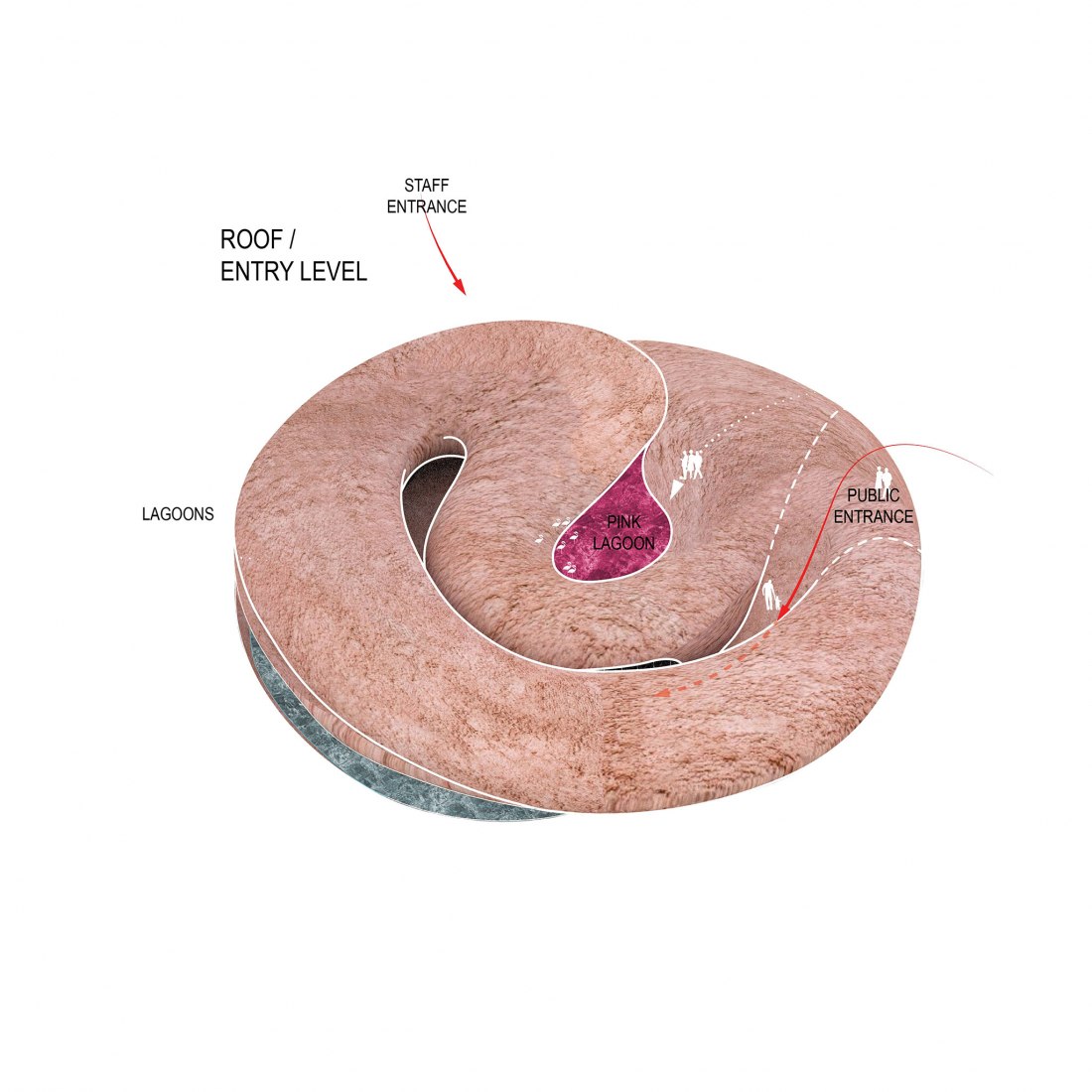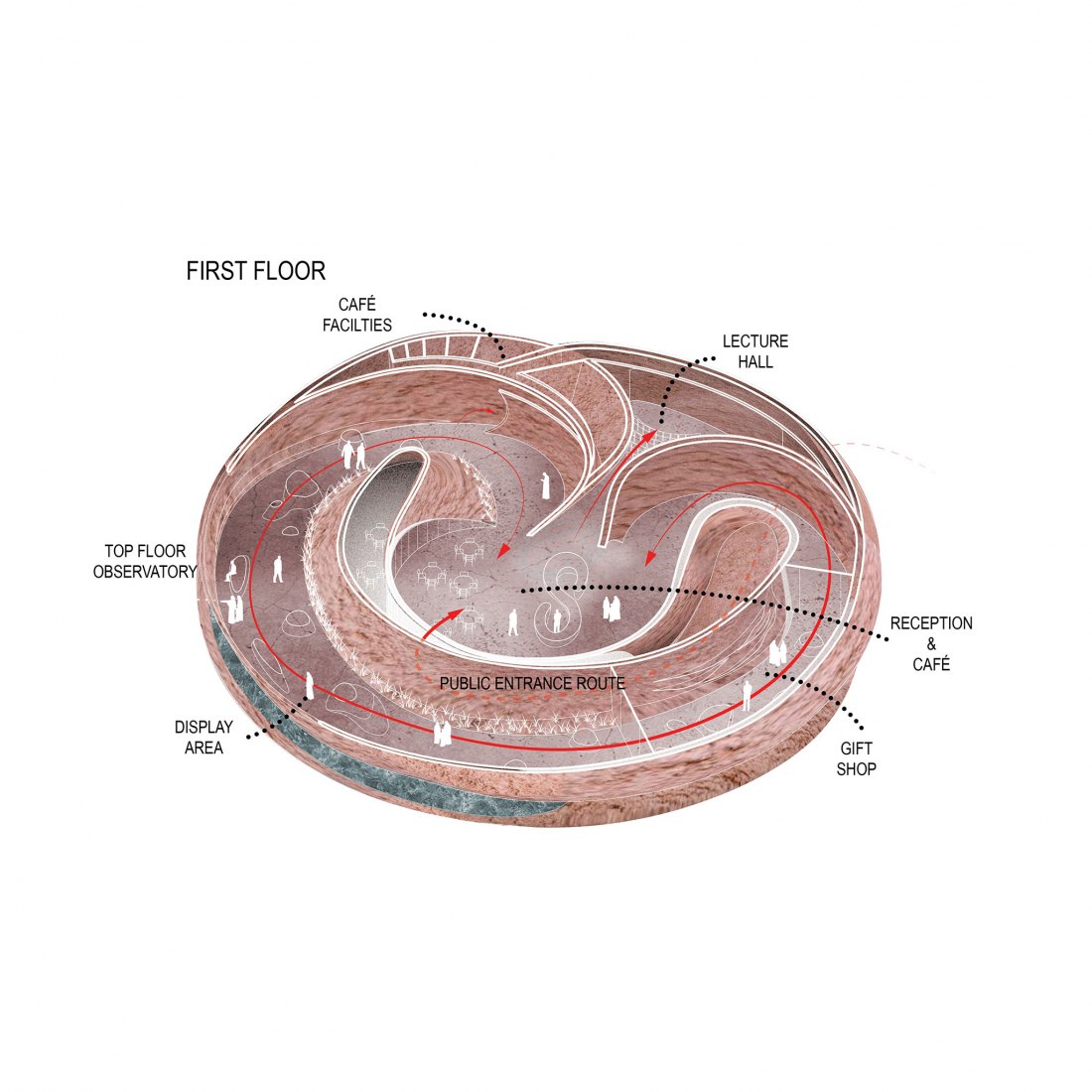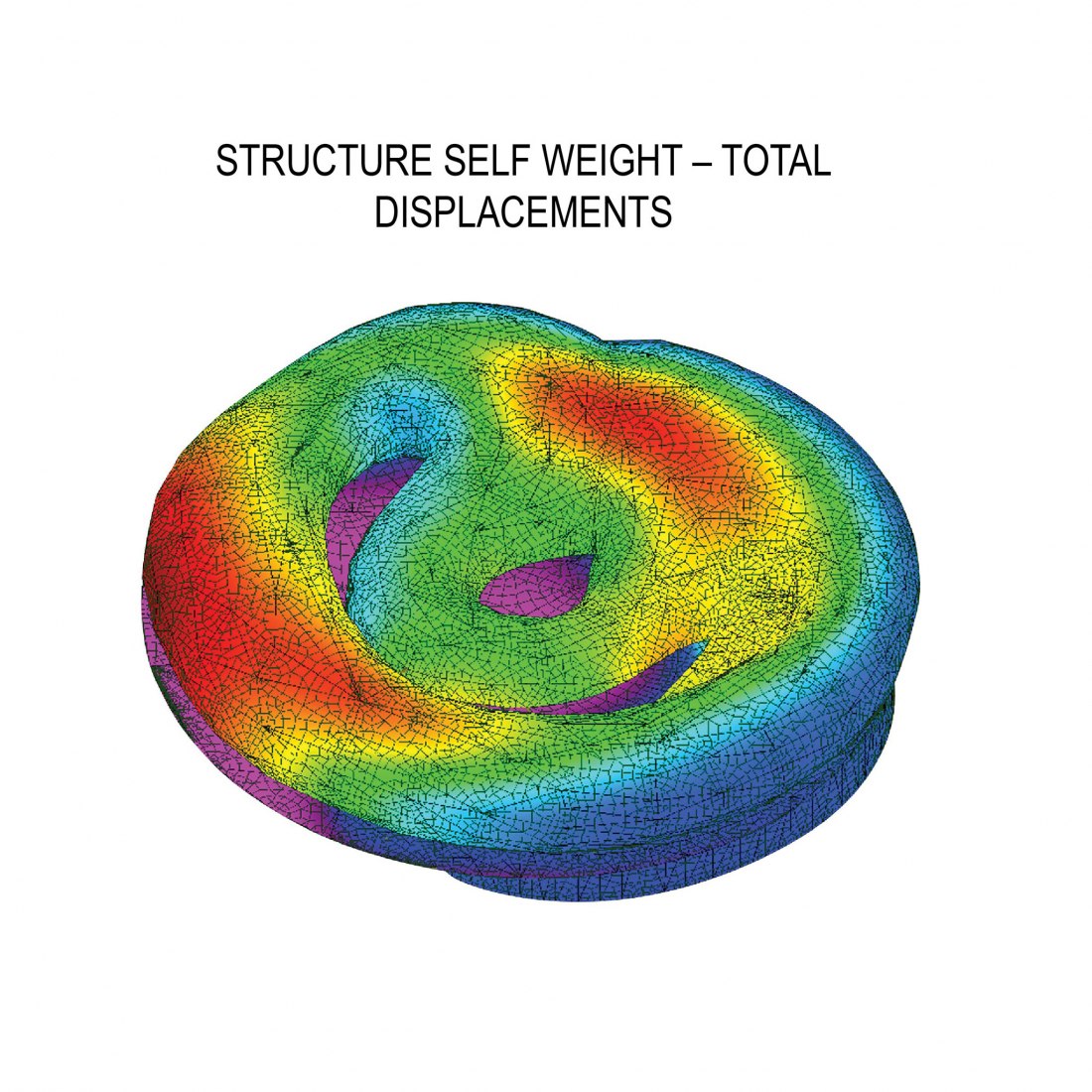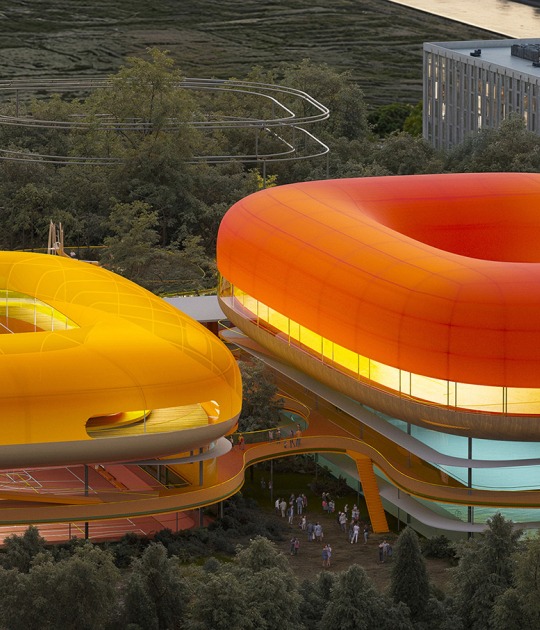Project description by Petr Janda
"To see and not to be seen"
... to feel, perceive, remember and protect ...
Idea
The main idea is to connect the visitor centre with the reserve’s nature at all levels of the project. To create an autonomous environment with the distinct genius loci. Using material and shape mimicry, the building organically connects its appearance with the environment of the reserve. It looks very old and, at the same time, contemporary or even futuristic. It works with the natural connection between the organic and inorganic components of nature, which permeates not only the technical part of the building (cooling and condensation system) but also all exhibition and didactic strategies (living parts of the facades, water elements and indoor life organisms).
The smooth connection of individual operation sections into an intertwined continuous floor plan creates a large number of surprising situations achieving a complex impression and spontaneous transfer of information to visitors on a small area. The building is designed as a visitor centre containing elements of a small museum with emphasis on flamingo nesting, allowing exhibition and program expansion (specifics of live forms influenced by carotenoid, partially live displays forming small biotopes).
Architectural design, spatial configuration
The spatial arrangement of the building is based on an O and S-shape intertwined composition with a circular floor plan, which naturally leads visitors through its folds and gradually opens the individual highlights of the building’s program and its interaction with the reserve. The building deliberately does not work with two-dimensional floor plans. In fact, it is more of a celebration of a three-dimensional natural world and its natural elegance. The dynamic curve arrangement and continuous shaping enables barrier-free movement around the building and infinitely diverse modulation of visitors' perception. Blending of exterior into a shaded forecourt and interior almost without a structurally articulated interface gives the object its timelessness.
View from a distance while arriving at the building initiates visitors into exploring the object, which, despite its iconic character, seems to merge with the terrain. The building works with the observer’s imagination using hints of natural phenomena that we have been used to reading since childhood (such as images in the clouds). The building thus refers to its connotations indirectly and subliminally through shape, material and fragmentary indications.
The resulting form is thus not unequivocally geomorphic or zoomorphic, it can be seen as references to the morphology of a sleeping flamingo as well as to rock formations in the Arabian desert with their significant stratification revealed by erosion. The design uses emphasis on bird's eye view with regard to the topic associated with flamingos and their migration and flying. The building belongs to a few objects where the view from the air is part of their reading (during the design process we consulted ornithologists and bird photographers on birds behaviour and possible reaction of birds to the appearance of the building and environmental change, and a landmark with organic shape seems to be beneficial for their orientation).
Dramaturgy and program content
The strategy of the visitor's movement is based on the gradual exploring and revealing of the building and its contents (similarly to the entire reserve exploration). The building is not divided into individual rooms and visitors move through several interconnected sectors that contain all the required functions, and are supplemented by technical and organizational spaces and complements inaccessible to visitors.
From the car park, access to the building leads through the roof, on which there is a lake (pink lake biotope) illuminating through the transparent bottom the main hall of the building below. Using a gradual ramp, visitors descend through a fold between the rotating tubes of the building's volume to an observation terrace shaded from the sun by a levitating overhang - a tube containing the display area and the main viewpoint of the reserve.
The terrace is separated from the reserve by a bay formed by a water element with a saltwater biotope containing microorganisms specific to the reserve. Our proposal sees the exhibition content as more complex and uses the specific reserve environment to outline the methodology in a bigger picture, showing the principles of colour changes affected by carotenoid (flamingos, water, crustacean, plants, algae) and other possible topics.
The exhibition is conceived as partially live with the plants and aquariums that help to maintain a pleasant climate with different humidity. Proceeding in the exhibition, visitors get to the culminating height point of the exhibition tube, which allows a maximum view of the reserve through a wide panoramic window. Another principle used to separate movement of visitors is a division into a sheltered area of the visitor centre (interior and shaded terraces) and movement around the reserve and parking area in the open air.
Description of preliminary structural concept and construction method
The building’s structure is an insulated sandwich made of cast and torcreted coloured concrete finished with sandblasting. The used material itself offers a didactic layer regarding the material, its colour, texture and structure, and the live organisms layer, which complements it and participates in cooling.
The technological process of pouring the concrete mixture will be carried out in layers with the resulting effect of a characteristic appearance reminiscent of rock formations in the Arabian desert, emphasizing the layers of the coloured pink-red concrete referring to carotenoid colour changes in flamingos. The individual layers will be cast up to the height of 40 cm so that the "geological" graining is highlighted. The individual layers will be coloured during concreting.
Technology
The design uses an innovative solution for the entire building based on the active use of heat distribution using two layers of coolant distribution (liquid) integrated into the shell of the inner and outer shell of the building, which use the temperature difference during the day and night. During the day, the indoor circuit is supplied with cooling water, which cools the entire inner shell of the concrete shell of the building and ensures pleasant cooling of the entire interior by indirect evaporative cooling with the effect of natural humidity suitable for the inner plant layer of the exhibition. During the night, the water heated during the day from the internal system is pumped into the outer circuit below the surface of the building shell, where the warmer water is cooled by night cooling air. The condensation on the building’s surface also waters lichens growing on the building surface. Using the smart circulation, it significantly reduces the operational costs while keeping a pleasant full surface cooling effect. Combined with controlled air circulation with maximum recuperation, it creates a very pleasant and environmentally sustainable climate in the building with significant saving of energy (fully electrified system) with minimal carbon footprint in the environment.
Life organisms concept
The concept of a live building uses plants connected to biotopes that are created directly by individual parts of the building. The surface of the building will be covered with lichens Xanthoria elegans nourished by the night surface condensation on the warm building’s shell. Lichens will visually transform the building over time in colour shades the same way the colour of flamingo changes depending on the food intake and the carotenoids it contains. The originally pinkish layered concrete will get light red accents highlighting the organic form of the building.
The entire indoor exhibition uses a live plant system combining the layers of grasses (Carex buchananii, Miscanthus sinensis 'FLAMINGO', etc.), higher reed and climbers, supplemented with lichen layers and local small aquarium biotopes in crater showcases grown into the floor using the method similar to building nests by flamingos. The third layer includes water biotopes located in two different versions of saltwater lakes with high salinity containing Dunaliella salina, Halobacterium cutirubrum in combination with high concentrations of crustaceans Artemia brine prawn and other organic cultures. These are located in the visitor's entrance area separating it from the nature reserve and on the roof of the building with the transparent bottom ensuring the distribution of light into the main hall.





